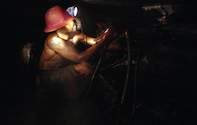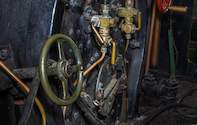Mining Camp for Gold Diggers
Roodepoort developed around a mining camp established by the Struben brothers on the farm Wilgespruit following the discovery of gold there in 1884.

Gold-diggers and fortune-seekers rushed to Roodepoort, and numerous other camps soon sprung up.
The discovery led Roodepoort to be declared a Public Diggings under the Gold Law in 1886. In 1890, the government implemented a railway line from Boksburg to Johannesburg to carry gold and passengers to and from the camps. In 1977, city status was granted to Roodepoort with many of the streets being named after gold mining pioneers of the era.
Since its days as a camp, Roodepoort has developed into a large residential and industrial area. Points of interest in and around the town for those on South African holidays include the Roodepoort Museum, the National Botanical Garden and the Kloofendal Nature Reserve, where the Struben brothers discovered the Confidence Reef in September 1884. In 1988, Stone Age tools were discovered in the Kloofendal Nature Reserve areas dating back to AD 900.
Roodepoort National Railway Museum

The Roodepoort Museum has a great collection of original mining utensils and instruments from the 1800s during the gold rush. It also houses some interesting paraphernalia collected from the influential families who prospered and lived in Roodepoort at the time. There is also a precious metals collection displaying all the minerals and gems found in the area.
The National Railway Museum has a fascinating collection of over 100 steam, diesel and underground electric locomotives, steam cranes, steamrollers, old passenger coaches and other items from the era of steam. The museum also offers an authentic steam train ride, which is a perfect treat for the whole family. There are also picnic grounds onsite to relax and explore some of South Africa’s oldest engines and machines.